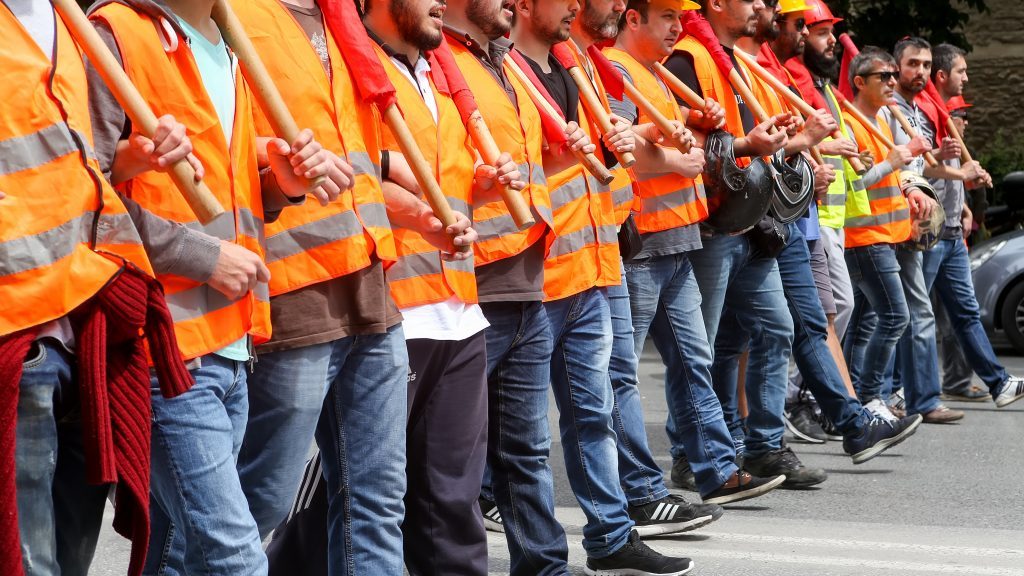We’ve been hearing it for years. Canada does not have enough skilled trades workers.
In construction alone, as many as 300,000 new workers are needed this decade to counter the retirement wave and keep up with major projects. As the scarcity of workers leads to more project delays and cost overruns across the country, it’s clear that if Canada is going to “build back better” it must find better ways to build up its skilled trades workforce.
If there’s any province that requires a skilled trades workforce at full strength, it’s in B.C., where catastrophic floods washed out entire communities and critical transportation links.
Canada’s defence minister has called for an “all hands-on-deck” response to rebuild the province’s battered infrastructure. But that’s not so easy.
Under B.C.’s restrictive Community Benefits Agreement (CBA) only workers with the Building Trades Unions (BTUs) can build key public projects, from stretches of the Trans-Canada Highway to the Pattullo Bridge Replacement. That leaves out 85 per cent of the province’s construction workers who choose not to join and pay dues to the BTUs.
With B.C. desperately needing workers to rebuild crucial arteries this is not the time to pick and choose who can build what. Labour laws that limit opportunities in the skilled trades and prevent all qualified workers from pitching in must go.
The same goes for Toronto, the only city in Ontario that at the height of the skilled trades shortage, allows only select union workers to build city projects, from splash pads to arenas. This is another outdated labour policy that drives up public construction costs. The end result is that less infrastructure actually gets built, just as elected officials promise more construction and more opportunities for people to learn a skilled trade. It cannot work both ways.
Building Canada’s skilled trades workforce also means addressing several other core challenges such as immigration.
According to Statistics Canada, more than one million jobs went unfilled as of September, including a record 80,000 vacancies in construction. Ontario is on the right track by urging the federal government to double the number of skilled and semi-skilled construction workers. The federal government should also move quickly to bolster the workforce by raising the cap on temporary foreign workers at companies that build public infrastructure projects.
Interprovincial regulations should change too, so that skilled trades workers can go where they’re needed most. Right now, prequalification exams and certifications can take months.
If a worker is qualified to work in one province, why shouldn’t he or she have the qualifications to apply their trade anywhere in Canada? A national harmonization of standards would help ease the labour crunch in specific regions.
Despite the best efforts of government, labour groups and educators, there’s still a huge lack of awareness about career opportunities in the skilled trades.
According to Skills Canada, 40 per cent of the jobs created in Canada this decade will be in the trades, yet only about 26 per cent of young people aged 13 to 24 are considering this career path. Both Alberta and Ontario are in the midst of reforming their skilled trades system. These are long overdue reforms aimed in part at countering stereotypes and demonstrating that the skilled trades are every bit as valuable as all other academic pursuits.
But the challenge isn’t just attracting more young people, underrepresented groups and those considering a career change to the skilled trades. It’s also about streamlining training and accreditation so it’s easier to navigate. It’s also about ensuring that skills training covers hard and soft skills, and encourages multi-skilling, so that today’s tradespeople are as proficient and productive as possible at more than one task, on every worksite.
Reforming labour laws, our immigration and skills training systems will go a long way in ensuring Canada maintains a steady flow of skilled tradespeople. That way we’ll not only have “all hands” but “more hands” on deck.
Paul de Jong is president of the Progressive Contractors Association of Canada. Send Industry Perspectives comments and column ideas to editor@dailycommercialnews.com.











Paul once again you have missed the important and clear objectives and purpose of CBAs.
Without a CBA in place local area qualified workers, indigenous, women and other disadvantaged workers would not be afforded an opportunity of priority for employment. Nor would there be defined apprenticeship, a much needed requirement so as to fill the shortage gaps thus ensuring there are qualified trades workers for the future. The definition of “streamlining” so there are only “partially” qualified workers isn’t the answer. We need Red Seal qualified! They are the mentors of the industry passing on to new apprentices the skill and know how of the trade. I for one and sure thousands of others do not want electrical work performed by a person partially trained. Your theory goes further – do you want a partially trained doctor of medicine, or partially dentist or a partially trained accountant being your lawyer. I think not!
Lets prepare for the future and train to the highest levels and recognize the fact we need highly skilled, well trained diverse workforce versus less than your suggested thought.